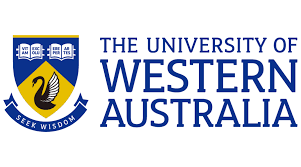University of Western Australia: St Mary’s students win Brain Bee with lucid dreaming video
St Mary’s Anglican Girls’ School has taken out top prize in the Australian Brain Bee Challenge held at The University of Western Australia, for a video on lucid dreaming – a unique state where a person is conscious during a dream.
The St Mary’s team of Lizzy, Avneet, Lilia and teacher Ms Lesley Galjaardt took top prize for their “well-researched and executed explanation” of the unusual experience of achieving conscious awareness of dreaming while asleep.
The Australian Brain Bee Challenge, the country’s only neuroscience competition for high school students, is supported by UWA, the Perron Institute and the Neurotrauma Research Program in WA, with students attending from across the state.
Six schools took part in the team video competition, with Bunbury Catholic College winning the people’s choice award for the second consecutive year for its video The Central Nervous System (A Song).
Their “clever and unique presentation” explained the processing centre of the body in song and claymation, with students Amy and Ingrid and teacher Ms Annabel Kanakis taking home the prize.
Brain Bee State Coordinator and UWA/Perron Institute MSWA Senior Research Fellow, Associate Professor Jennifer Rodger, said the aim of the Brain Bee was to provide students with insight into why research into the human brain is important, while at the same time showcasing a variety of career opportunities in science.
“Although we’ve made much progress across all fields of medical research, we still only have a very basic understanding of how the brain works,” Associate Professor Rodger said.
“An ageing population and the devastation caused by neurological disorders highlight the importance of making advances in neuroscience. We also need to continue cultivating the curiosity and passion of our young people and researchers who can really make a difference in the future.
“Since it began in 2007, this event to engage young students has provided us with the opportunity to do just that.”
School students participated in activities including lab work to understand the electrical impulses in brain cells that underpin our consciousness and ability to think; learning about neurological diseases and how we diagnose them; and looking at the latest research in the field and future challenges for scientists.
Associate Professor Rodger said one of the highlights of the event was seeing the students inspired by and engaged in the activities.
“It was so impressive to hear the excellent questions that they asked the volunteer staff and students throughout the day. I hope that some of these students will go on to work in the field and help make future advancements in neuroscience,” she said.
The other schools to present videos on the day were Holy Cross College, Perth Modern School, Shenton College and Woodvale Secondary College.
Mater Dei College, Great Southern Grammar Albany, Fremantle College, Duncraig Senior High School, Holy Cross College, Emmanuel Catholic College, CBC Fremantle and Kelmscott Senior High School all also took part in the day.

